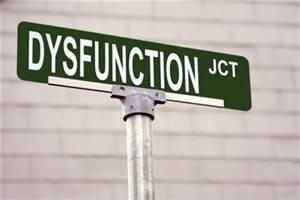17 Feb Beyond the Junction
 The Governor’s new plan to ease traffic congestion on Interstate 405 was announced February 16 with an odd caveat from Jeff Merrill, president of the Washington State Patrol Troopers Association. Merrill warned that in some key spots the new 405 plan fails to provide enough space to pull over errant drivers, a limiting factor for enforcing traffic laws.
The Governor’s new plan to ease traffic congestion on Interstate 405 was announced February 16 with an odd caveat from Jeff Merrill, president of the Washington State Patrol Troopers Association. Merrill warned that in some key spots the new 405 plan fails to provide enough space to pull over errant drivers, a limiting factor for enforcing traffic laws.
According to a news account, Merrill said the Governor’s plan might make existing conditions worse. “It is kind of a knee-jerk reaction to a bad plan, and now we’re trying to arrange a quick fix to facilitate a higher level of traffic.”
You might assume such a plan would be vetted by the governor’s State Patrol prior to a gubernatorial announcement. But, if you assume that, you must not be paying attention to our often baffling world of transportation services and infrastructure.
The Governor’s 405 proposal came in the wake of the State Legislature terminating the tenure of Inslee’s transportation director, Lynn Peterson. Inslee blamed Republicans for interfering with his management team, while Republicans blamed poor execution of major state projects, including the new tolling program for 405.
But, each side’s argument fell short in describing the depth of our transportation governance woes.
That topic will be addressed by guest speaker Doug MacDonald at the Feb. 23 meeting of the Manufacturing Industrial Council. A former Secretary of Transportation for the State of Washington, MacDonald brings rare insights to these issues. He’ll address the meeting at about 4 p.m., with the monthly meeting scheduled to last from 3:30 to 5 p.m.
The meeting will be held in Gene J. Colin Education Hall at Building C of the Georgetown Campus of South Seattle College. Use the campus entrance at 6737 Corson Avenue South. If you plan to attend Wednesday, please RSVP to tory@box2063.temp.domains.
The Olympia dispute takes place at a time of progress on three significant freight issues in south Seattle.
Hopeful signs include plans to revamp the design for the long delayed Lander Street Overpass; recent adoption of a heavy haul corridor program for marine cargo, and progress on a long discussed freight master plan for the city.
But, to move beyond Dysfunction Junction, people have to overcome a governance system that’s badly fractured and poorly aligned. For instance, the City of Seattle is in charge of the freight plan, but SODO transportation is deeply impacted by railroad and marine traffic – two freight modes under the jurisdiction of separate federal agencies. City government is responsible for local streets while state and federal agencies are responsible for highways, and on facilities like the Alaskan Way Viaduct, it’s up for grabs who is in charge.
In the world of transit, the regional Sound Transit agency is responsible for the light rail commuter system and Metro/King County runs most of the bus service and bus service is so poor in SODO, the neighborhood is home to an enormous bus driver parking garage.
Land use is supposed to be planned in tandem with transportation service, but city government controls land use and, sometimes, as in the case of the proposal for a third SODO sports arena, city government makes decisions in isolation from the other agencies.
In a KING TV story last fall about our transportation mish-mash, MacDonald offered the observation that “We’ve got lots of different agencies making decisions, not talking to each other very well, each with a different piece and nobody looking at the whole picture.”
It’s hard to argue with him about that, but you can try at the MIC meeting February 23.
